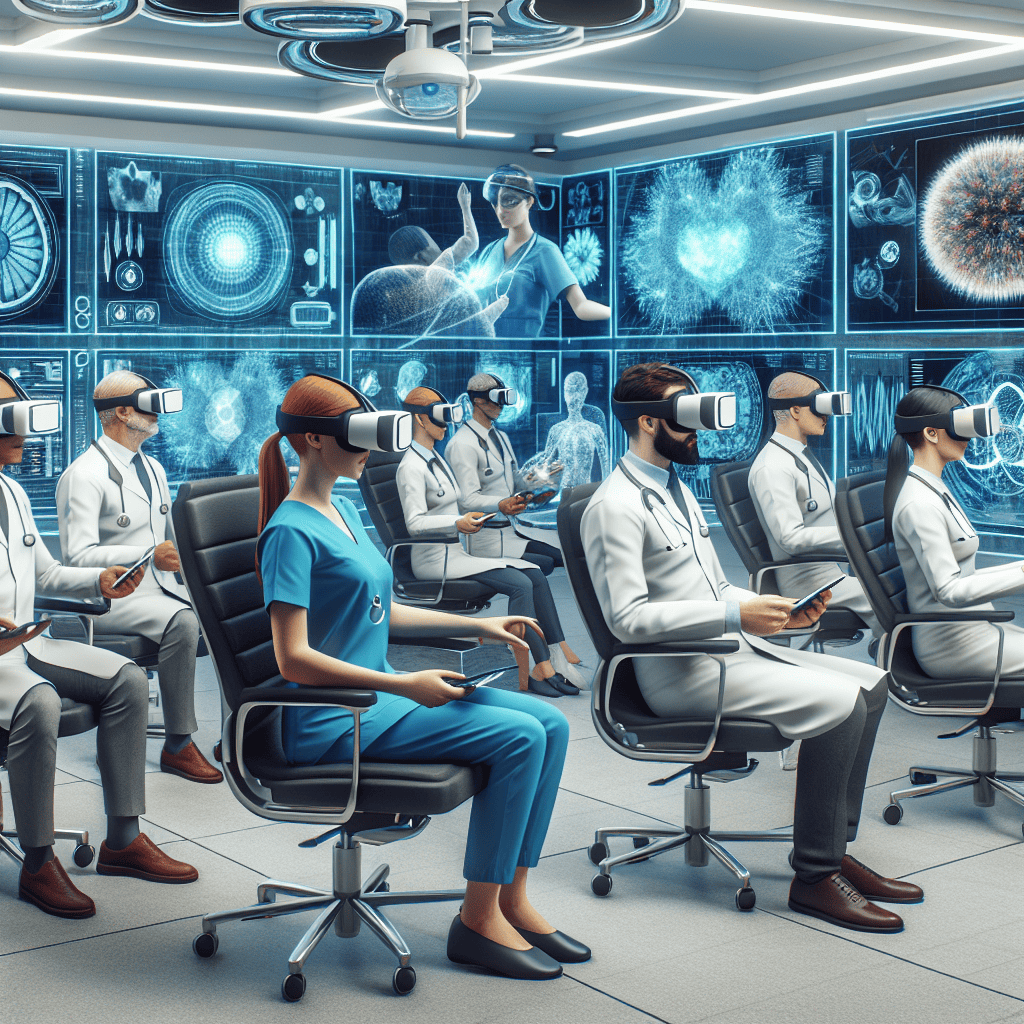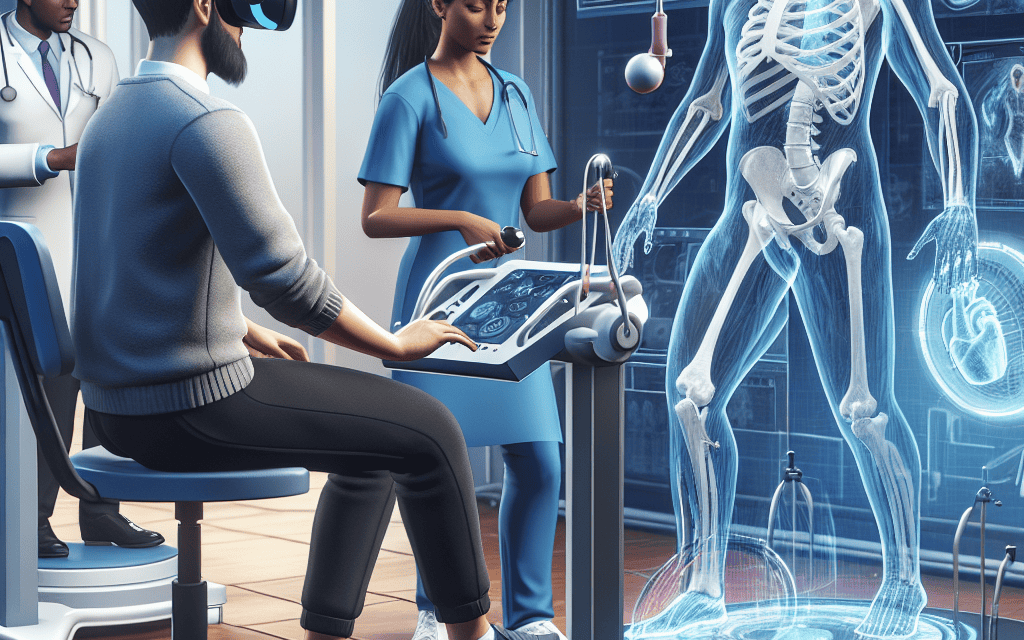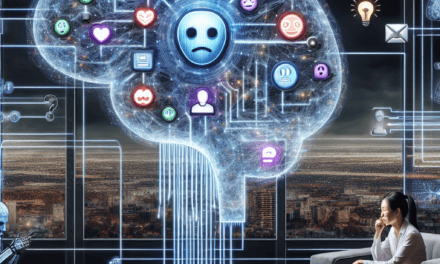-
Table of Contents
- Virtual Reality in Medical Training and Patient Therapy
- The Role of Virtual Reality in Medical Training
- Enhancing Surgical Training
- Improving Anatomy Education
- Simulating Emergency Scenarios
- Facilitating Interdisciplinary Collaboration
- Overcoming Geographical Barriers
- Virtual Reality in Patient Therapy
- Pain Management
Virtual Reality in Medical Training and Patient Therapy

Virtual Reality (VR) has emerged as a transformative technology in various fields, and its application in medicine is particularly promising. From enhancing medical training to providing innovative patient therapy solutions, VR is reshaping the healthcare landscape. This article delves into the multifaceted role of VR in medical training and patient therapy, exploring its benefits, challenges, and future potential.
The Role of Virtual Reality in Medical Training
Medical training is a complex and demanding process that requires precision, skill, and extensive practice. Virtual Reality offers a unique platform for medical professionals to hone their skills in a controlled, risk-free environment. This section explores how VR is revolutionizing medical education and training.
Enhancing Surgical Training
One of the most significant applications of VR in medical training is in the field of surgery. Traditional surgical training methods often involve observing procedures, practicing on cadavers, or using synthetic models. However, these methods have limitations in terms of availability, realism, and ethical concerns.
VR provides an immersive and interactive environment where surgical trainees can practice procedures repeatedly without the risk of harming patients. For instance, platforms like Osso VR and Touch Surgery offer realistic simulations of various surgical procedures, allowing trainees to develop their skills and confidence.
- VR simulations can replicate complex surgical scenarios, providing trainees with exposure to rare or complicated cases.
- Feedback and performance metrics are integrated into VR platforms, enabling trainees to track their progress and identify areas for improvement.
- Studies have shown that VR-trained surgeons perform better in real-life surgeries, with improved precision and reduced error rates.
By offering a safe and effective training environment, VR is helping to produce more competent and confident surgeons.
Improving Anatomy Education
Anatomy is a fundamental subject in medical education, yet traditional methods of teaching anatomy, such as textbooks and cadaver dissections, have limitations. VR offers a dynamic and interactive way to study human anatomy, enhancing understanding and retention.
Platforms like 3D Organon and Human Anatomy VR provide detailed, three-dimensional models of the human body, allowing students to explore anatomical structures from different angles and perspectives. This interactive approach facilitates a deeper understanding of spatial relationships and complex systems.
- VR allows for the visualization of physiological processes, such as blood flow and organ function, in real-time.
- Students can manipulate and dissect virtual models, providing a hands-on learning experience without the ethical concerns associated with cadaver use.
- Research indicates that VR-based anatomy education improves student engagement and knowledge retention compared to traditional methods.
By transforming anatomy education, VR is helping to produce more knowledgeable and skilled medical professionals.
Simulating Emergency Scenarios
Emergency medicine requires quick thinking, decisive action, and the ability to remain calm under pressure. VR offers a unique platform for simulating emergency scenarios, allowing medical professionals to practice their skills in a realistic and controlled environment.
VR simulations can replicate a wide range of emergency situations, from cardiac arrests to mass casualty incidents. Trainees can practice their response to these scenarios, improving their decision-making skills and ability to work under pressure.
- VR simulations can be customized to reflect different environments, such as hospitals, ambulances, or disaster sites.
- Real-time feedback and debriefing sessions help trainees learn from their experiences and improve their performance.
- Studies have shown that VR-based emergency training improves response times and decision-making accuracy in real-life situations.
By providing a realistic and immersive training environment, VR is helping to prepare medical professionals for the challenges of emergency medicine.
Facilitating Interdisciplinary Collaboration
Healthcare is increasingly becoming a collaborative field, with professionals from different disciplines working together to provide comprehensive care. VR offers a platform for interdisciplinary training, allowing medical professionals to practice working together in a virtual environment.
VR simulations can replicate complex medical scenarios that require input from multiple disciplines, such as surgery, anesthesiology, and nursing. Trainees can practice their communication and teamwork skills, improving their ability to work effectively as part of a team.
- VR-based interdisciplinary training promotes a better understanding of each discipline’s role and responsibilities.
- Simulations can be customized to reflect different healthcare settings, such as hospitals, clinics, or community health centers.
- Research indicates that VR-based interdisciplinary training improves collaboration and communication skills among healthcare professionals.
By facilitating interdisciplinary collaboration, VR is helping to improve the quality of healthcare delivery.
Overcoming Geographical Barriers
Access to high-quality medical training is often limited by geographical barriers, with many healthcare professionals unable to attend training programs due to distance or cost. VR offers a solution to this problem by providing remote access to training programs.
VR platforms can be accessed from anywhere in the world, allowing healthcare professionals to participate in training programs without the need for travel. This is particularly beneficial for professionals in rural or underserved areas, who may have limited access to training opportunities.
- VR-based training programs can be customized to reflect local healthcare needs and challenges.
- Remote access to training programs reduces the cost and time associated with travel, making training more accessible and affordable.
- Studies have shown that VR-based remote training is as effective as in-person training, with similar improvements in knowledge and skills.
By overcoming geographical barriers, VR is helping to democratize access to medical training and improve healthcare outcomes worldwide.
Virtual Reality in Patient Therapy
Beyond medical training, Virtual Reality is also making significant strides in patient therapy. By offering immersive and interactive experiences, VR is providing new avenues for treatment and rehabilitation. This section explores the various ways VR is being used in patient therapy.
Pain Management
Chronic pain is a prevalent issue that affects millions of people worldwide. Traditional pain management methods, such as medication and physical therapy, often have limitations and side effects. VR offers a novel approach to pain management by providing immersive experiences that distract patients from their pain.
VR-based pain management programs use immersive environments to engage patients’ attention and reduce their perception of pain. For example, patients can be transported to calming virtual environments, such as beaches or forests, where they can relax and focus on positive experiences.
- Studies have shown that VR-based pain management can significantly reduce pain levels in patients with chronic conditions, such as fibromyalgia and arthritis.
- VR can be used as an adjunct to traditional pain management methods, reducing the need for medication and its associated side effects.
- Patients report high levels





